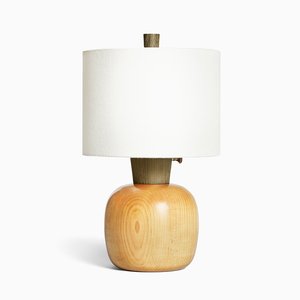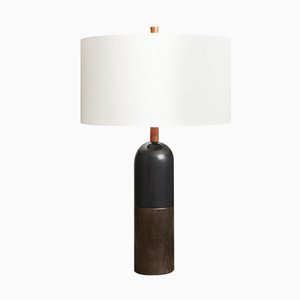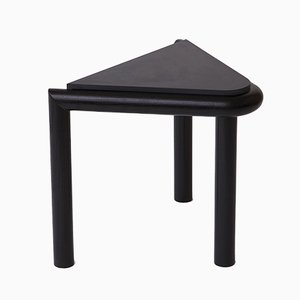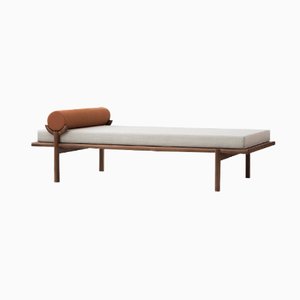RISD’s Edna Lawrence Nature Lab hosts a world of creative inspiration
Life Lessons
-
Photo © Josephine Sittenfeld for L'AB/Pamono>
-
Photo © Josephine Sittenfeld for L'AB/Pamono
-
Photo © Josephine Sittenfeld for L'AB/Pamono
-
Photo © Josephine Sittenfeld for L'AB/Pamono
-
Photo © Josephine Sittenfeld for L'AB/Pamono>
-
Photo © Josephine Sittenfeld for L'AB/Pamono
-
Edna Drawing Moths
Courtesy of RISD
-
Photo © Josephine Sittenfeld for L'AB/Pamono
-
Photo © Josephine Sittenfeld for L'AB/Pamono
-
Photo © Josephine Sittenfeld for L'AB/Pamono
-
Photo © Josephine Sittenfeld for L'AB/Pamono
-
Photo © Josephine Sittenfeld for L'AB/Pamono
-
Photo © Josephine Sittenfeld for L'AB/Pamono
-
Anna Carnick, our Managing Editor, at RISD's Nature Lab
Photo © Josephine Sittenfeld for L'AB/Pamono
-
Photo © Josephine Sittenfeld for L'AB/Pamono
-
Photo © Josephine Sittenfeld for L'AB/Pamono
-
Photo © Josephine Sittenfeld for L'AB/Pamono
-
Photo © Josephine Sittenfeld for L'AB/Pamono
-
Photo © Josephine Sittenfeld for L'AB/Pamono
-
Photo © Josephine Sittenfeld for L'AB/Pamono
-
Photo © Josephine Sittenfeld for L'AB/Pamono
-
Photo © Josephine Sittenfeld for L'AB/Pamono
-
Edna Lawrence with owl and scowl
Courtesy of RISD
-
Edna Lawrence with skull
Courtesy of RISD
-
Edna Lawrence and class, October 1951
Courtesy of RISD
In a creative mind, something as seemingly small as a speckled seashell or brightly colored butterfly can inspire a fashion season’s worth of fabric patterns. A sea sponge’s form can give rise to an über modern lampshade, while a skeleton’s bones can inform a modern jewelry piece. And the structure of a beetle’s wings can spark everything from the shape and motion of a daringly sleek car door to the way a pair of pantyhose is folded and packaged.
That sort of organically inspired thinking is at the heart of the Edna Lawrence Nature Lab, a charming and quite quirky, hands-on natural history collection and studio space at the Rhode Island School of Design in Providence. Part museum, part lending library, and all classroom, the lab features an estimated 100,000 specimens from each of the five scientific kingdoms (most of which visitors are encouraged to poke, prod, and even take home). It has served as a source of biomimetic stimuli for RISD students and faculty across disciplines for decades, as well as a forum for exploring the often subtle connections among man, nature, art, and design.
From the moment one enters the Nature Lab, which exists in two floors of RISD’s Waterman Building (notably, the first structure constructed by the school in 1893), it’s clear you’re in a very special place. From taxidermy creatures like puffer fish and birds floating overhead to a live turtle crawling on the creaky, dark wood floor at your feet—not to mention the thousands of specimens in the Victorian era cabinetry covering the walls—the lab is brimming with life. And those are just the permanent tenants. Over the course of one recent visit, the Nature Lab hosted students sketching samples, masters level microscopic research, a tutorial on scientific poster presentations, plus work scholars pinning recent findings for the bug collection and undertaking a spider sample repair; in short, the lab space is in high demand.
The Nature Lab is a rare and seamless combination of the historical and the modern. The lab boasts everything from hundred-year-old plants, minerals, and stuffed and stripped mammals to a gang of more modern human skeletons (led by two standouts called Kurt and Courtney—a clear indication of the era from which they come), as well as a suite of technologically advanced offerings, including photo and video microscopy workstations, digital cameras, computers, and more. On my first visit, I found myself particularly taken with Tiny Town, an old-school library card catalogue whose drawers house thousands of tiny, natural specimens (Need to see what a bat’s hands look like up close? Tiny Town has you covered); on my second visit, the entire lab was abuzz with excitement over its newest acquisition, a decidedly cutting-edge scanning electron microscope. There’s a curious sense of being simultaneously frozen in time and at the forefront of highly innovative, cross-disciplinary, and collaborative work.
According to Lab Coordinator Betsy Ruppa, who oversees operations and approximately 25 work scholars in the student-run venue each semester (and whose hospitality and knowledge are exceeded only by her charm; she conducted my first tour with a live praying mantis in her hand the entire time), a big part of the lab’s magic comes from its hands-on culture, and the resulting sense of openness that permeates the space. “We know we can’t keep a pristine collection; we don’t even try. There are too many hands touching the samples, and they go in too many backpacks. That’s also what’s cool about it, though. It’s such an amazing resource, and there is so much freedom—more freedom than you’d have in a typical museum or library, for example.” In keeping with the spirit of that unusual freedom, if, as happens from time to time, students misplace something they’ve been lent, they’re asked to replace the item with either something in kind or a totally new specimen of their choosing.
Unmediated access has been integral to the collection’s identity from the start. When its namesake, RISD alumna (class of 1920) and teacher Edna Lawrence, launched the collection in 1937, her intention was to provide a uniquely interactive environment that would inspire her students. By multiple accounts, Lawrence was a much-loved character—strict but warm, (occasionally) funny, and very talented—who had the remarkable foresight to understand what the lab might become—a place to support and expand both the way that students learn and problem solve as well as the potential connections between art, design, and science over time.
Lawrence taught nature drawing between 1920 and 1974 in what was formerly her classroom, and is the Nature Lab’s current main room. During her 50-plus years as a teacher at RISD, she built up the collection through her own gathering expeditions. Every summer, according to the Nature Lab’s Director Neal Overstrom, “she’d travel around the world, sometimes to Europe aboard a steamship or a freighter, other times going to the Caribbean and South America. She even drove across country in the 1920s, camping along the way.” Slowly, thanks to Lawrence’s efforts, along with faculty and student donations, her teaching collection grew into what Overstrom aptly describes as an “intuitive and natural portal to science.”
Lawrence retired in the 1970s, and in 1981, the lab was renamed in her honor. Since that time, a series of curators has maintained her legacy and carried on her vision. On any given day, it might host undergraduate, graduate, and faculty guests from the Industrial Design, Architecture, and Apparel Design departments (among others), or even, of special note, RISD students and faculty involved in Rhode Island’s Experimental Program to Stimulate Competitive Research (EPSCoR)—an innovative, multi-school, state-wide effort funded by the National Science Foundation and aimed at making Rhode Island an “international leader in understanding and predicting the response of marine organisms and ecosystems to climate changes and variability.” This program—which over the past two summers has included fellowship opportunities for RISD and Brown students to undertake research in science communication around these topics—has led to the expansion of the Nature Lab’s aquatic resources, including two large saltwater tanks and special aquariums called kreisels built by RISD students to house ctenophores (tiny jellyfish-like creatures also known as comb jellies).
The breadth of the lab’s constantly growing collection falls neatly under the umbrella of a larger school initiative known as STEM to STEAM, which aims to add art and design to the national agenda of STEM (Science, Technology, Engineering, Math) education and research. Championed by RISD President John Maeda, the initiative promotes the idea that scientific and artistic inquiry can be drawn together to foster new, innovative ways of approaching research and problem solving.
That creative, interdisciplinary thinking goes hand-in-hand with the Nature Lab’s position as an experimental and exploratory forum. As Overstrom notes, “Edna Lawrence's vision really was remarkable. The way in which it’s informing many of these programs, like EPSCoR, which seem to find sort of a quasi-home here, speaks to the fact that this way of explaining a natural science collection has many applications in many emerging conversations about design, about nature inspired design, and even the field of biophilic design; this idea that you have an innate affinity for life and lifelike processes, of understanding the human-nature connection in built environments. The Nature Lab continues to be both a relevant and dynamic resource for all these emerging design disciplines.”
“We spend a lot of time thinking about Edna, actually,” adds Ruppa. “She was passionate about helping people to draw realistically and to explore and find inspiration in nature—to see connections and patterns throughout species and across kingdoms. She provided the foundation.”
In fact, according to Overstrom and Ruppa, some of Lawrence’s remaining documents even reveal her thoughts on the lab’s future and notions of advanced technologies and even micro-imaging. Says Overstrom, “Her mission was to provide immediate access to specimens, and microscopes allow you access where you might not otherwise. It’s just an extension of that. She was quite a forward thinker.”
The ever-evolving collection is a unique bridge between the past and the present, with a definitive eye toward the future. And considering the palpable energy and creativity that the students and staff derive from the space, it seems safe to say that Edna Lawrence would be proud. As Ruppa notes, “I could look at the same exact tiny skull as twenty other people, and we’d each be inspired differently. That’s what’s so great; you never know where someone’s going to get their idea.”
RISD’s Nature Lab seems like a logical place to start.
-
Text by
-
Anna Carnick
Anna est la Rédactrice en Chef de Pamono. Ses textes ont figuré dans plusieurs publications d'art et de culture et elle a rédigé plus de 20 livres. Anna aime rendre hommage aux grands artistes et elle apprécie tout particulièrement les bons pique-niques.
-
-
Images by
-
Josephine Sittenfeld
Originally from Ohio, photographer Josephine lives in Providence, Rhode Island with her daughter and husband. She received her BA from Princeton University and her MFA in photography from the Rhode Island School of Design, where she is a faculty member.
-


























 Ctenophores in the RISD Nature Lab
© Josephine Sittenfeld for L'AB/Pamono
Ctenophores in the RISD Nature Lab
© Josephine Sittenfeld for L'AB/Pamono





